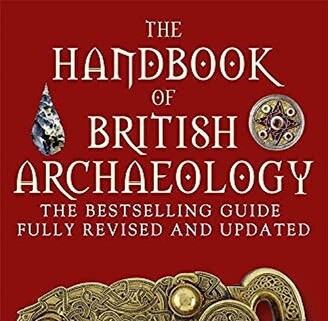New archaeological research is revealing that, more than a thousand years before Britain became part of the Roman Empire, it was part of an extraordinary Mediterranean-based trading network.
Investigations being carried out by archaeologists from five European countries suggest that around 3,300 years ago, the western Mediterranean island of Sardinia started to become a powerful trading centre, eventually linking Britain, Scandinavia, Spain and Portugal in the West to what are now Turkey, Syria, Israel, Cyprus and Crete in the east.
A series of ground-breaking discoveries are revealing, for the first time, the remarkable role played by the island - one of the world’s least known ancient civilizations, known to archaeologists as the Nuragic culture.
And it is showing the remarkable way in which Britain seems to have contributed to that civilization’s development.
…
The island (a series of chiefdoms) was rich in copper ore - which helped turn it into a Bronze Age mercantile and economic superpower (because copper was one of the two key ingredients needed to make high quality bronze, which was far stronger than copper on its own).
But the second key ingredient, needed to make high quality bronze, was tin - and one of the best sources of tin in the ancient world was Cornwall. Tin played a crucial role in human history - because it enabled the production of really strong manufactured goods and its acquisition usually necessitated and promoted long distance trade.
Recent scientific research has revealed that Cornish tin was being delivered, probably by Sardinian or Sardinian-connected merchants, to what are now Israel and Turkey.
What’s more, a study of a shipwreck off the Devon coast has revealed that a Bronze Age ship, carrying Cornish tin ingot exports, were also carrying items from Sardinia or Spain. The English Channel appears to have been a Bronze Age highway for delivering Mediterranean copper ingots and Cornish tin ingots to Scandinavia and for transporting Danish amber to Britain, Ireland, Spain and the Mediterranean.
And a growing body of evidence now suggests that, at the heart of this Bronze Age international trade, lay Sardinia’s mysterious Nuragic civilization.
All parts of the network prospered as a result of that trade - and recent archaeological excavations have found a Bronze Age settlement at one of the most likely ports used at the Cornish end of the maritime route, St. Michael’s Mount near Penzance
…
All the new research suggests that Sardinia itself acted as the major trading hub - with British, Scandinavian and Iberian raw materials and products (including tin, copper and amber) being shipped to Sardinia for transhipment to points further east like Crete, Cyprus, Syria, Lebanon and Israel. In the other direction Sardinian and perhaps other ships are now thought to have carried Middle Eastern glass beads, Egyptian faience, Cypriot copper ingots, precious gemstones and other products to customers in the West.
In Britain, archaeologists have found Iranian and Egyptian beads, Scandinavian amber items, Aegean metalwork, Cypriot and Spanish copper ingots and Sicilian razors, all of which would have had to have been imported by sea.
…
But there is one tantalising piece of evidence that ancient Sardinians themselves may have visited Britain - for there is an enigmatic and mysterious rock-cut tomb (the only one of its sort ever found in Britain) in northern Scotland, on the island of Hoy in Orkney, the nearest rock-cut parallel for which is in Sardinia.


